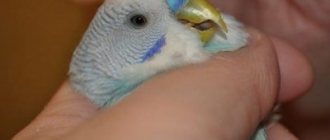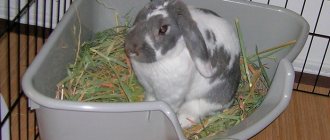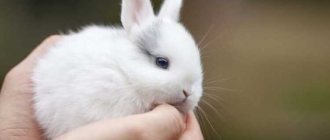The hedgehog is such a cute, charming animal . Having seen him, it is impossible to restrain the smile on his face and not be touched by his appearance, everyone wants to cuddle him and immediately give him shelter. But people’s attitude towards these creatures was not always so favorable. In ancient times, the skins of killed hedgehogs were used to comb the wool of sheep. Well, in our time, they can become a good option for a pet.
In modern society, purchasing an exotic pet will not surprise anyone, including a hedgehog. They go along with ordinary pets, such as cats, dogs, hamsters, guinea pigs and so on. Hedgehogs, like other animals, come in different breeds.
Often, you can meet these creatures in the forest or at your summer cottage, but alas, taking it to your apartment is not the best idea; it’s safer to visit a nursery or go to a special store. But still, most people, before buying this animal, are tormented by doubts: is it worth getting one? This article will make it very clear all the advantages of keeping a hedgehog and show the negative sides of coexistence with one.
Is it worth keeping an African pygmy hedgehog at home?
Small and funny, African pygmy hedgehogs are in demand among those who cannot afford to keep a large animal. But before you make a final decision on purchasing a decorative exotic, you should analyze its advantages and disadvantages.
| pros | Minuses |
| Compact dimensions | Staying awake at night |
| Low maintenance | Sensitive stomach |
| Hypoallergenic | Difficulty finding a veterinarian |
| No need for walking |
African hedgehog - care and maintenance
African pygmy hedgehogs are not capable of living in their natural environment. Decorative animals cannot tolerate low and high temperatures. Therefore, it is necessary to maintain a certain microclimate in the room. The temperature there should be between 20-25°. If this indicator drops to 15°, the animals will hibernate.
Find out in detail - “How to properly keep hedgehogs at home.”
Cage and filler
A decorative exotic living in an apartment needs a spacious cage with a solid bottom measuring at least 60 x 60 cm. It must be equipped with strong, thick bars through which the pet cannot get out.
On a note. A terrarium, an ordinary box and a two-level cage are not suitable for keeping pygmy hedgehogs.
It is recommended to cover the floor with a uniform layer 1.5-2 cm thick of birch sawdust, granulated paper or special filler. The filler needs to be changed as it gets dirty, but at least once a week.
African pygmy hedgehogs are quite shy, so the cage must have a house in which they can hide. It is also recommended to install a running wheel with a diameter of about 30 cm, a well-fixed drinking bowl, a heavy feeder and a tray.
The prickly animal is a big fan of entertainment. You can buy tunnels, balls and bells as toys for your animal.
African hedgehog - hygiene
In order for a decorative animal to have a neat appearance, it must be properly cared for. To eliminate parasites, heavy dirt and unpleasant odors, your pet needs to be bathed. It is recommended that the animal undergo bathing procedures no more than 1-2 times a month.
The pet is slowly immersed in a basin of warm water, carefully supported by the upper part of the body. First, thoroughly wash the paws and stomach, and only then begin to treat the back. The pet's spines are carefully washed with a toothbrush and baby shampoo. Upon completion of the procedure, the animal is thoroughly rinsed, wrapped in a towel and waited for it to dry.
On a note. Apply 1 drop of peach or apricot oil to the withers and base of the tail of a completely dry pet with a pipette.
Taming the African Hedgehog
For a pygmy hedgehog to become a true friend, it needs to be educated. You can influence the character of a prickly pet if it is not yet 6 months old. Since the animal sleeps during the day, it is better to get acquainted with it in the evening. In order for an African hedgehog to get used to a human voice, you need to talk to him quietly and affectionately for 20 minutes a day.
To accustom it to the owner's smell, any item of the owner is placed in the animal's cage. And in order to establish close contact, they try to feed the pet more often from the palm.
When the animal gets a little used to its owner, you can try to lift it by its abdomen. If the pet produces thorns, it is handled with a towel or blanket. The animal must not be picked up from above. In order for the pet to calmly accept tactile contact, the palm is extended towards it from the side of the head. Then the animal will see her and calm down.
Important! African pygmy hedgehogs cannot tolerate strong aromas. Therefore, before communicating with them, it is not advisable to use strong-smelling perfumes and creams.
How does a forest hedgehog behave at home?
If it so happens that an animal from its natural environment has come into your house, then you should listen to the experience of those who already have experience keeping a forest animal at home.
Anasteja
When my husband was mowing the grass around the country house, he noticed the little hedgehog too late. The running gasoline scythe left the baby slightly stunned and concussed. Putting him in a baseball cap so as not to injure his hands with the thorns, the husband brought the baby home.
In the first hours of being in the house, we had to weigh the hedgehog; it weighed 190 grams; since it was already August, it was most likely the second litter.
The animal was placed in a cage for rodents with a bottom tray, 12 cm high, the entire cage was 35 cm high, the same width and 75 cm long.
It is important to equip a comfortable cage. They put hay and some newspapers in the cage. The hedgehog immediately rearranged it all so that he could hide. We strengthened the drinking bowl.
The question immediately arose, what to feed the new tenant? Many people mistakenly believe that these animals drink milk, eat mushrooms and apples. In fact, hedgehogs eat insects, small mammals, small reptiles and amphibians.
At home, they cut chicken and meat for the animal, and sometimes gave it soft food for kittens. Empirically, we came to the conclusion that what our Hedgehog loves most is the large dried gamarus for aquarium fish, which we bought for him at the pet store.
In nature , hedgehogs are nocturnal animals, but at home our pet was active during the day. He willingly took food from hand after a couple of weeks of living in the house. Over time, he stopped curling up into a ball and only hissed at the family dog when he approached the cage. He jumped up very funny, trying to prick the curious dog's nose with needles.
Watching the pet scratch funny with its hind legs, we suspected the presence of fleas, although they were not visually visible. They picked wormwood, dried it and began to put it in the cage. Over time, the itching became less.
By the end of October, the animal had grown noticeably and already weighed 570 grams. They began to notice that the pet had become less active, since in winter hedgehogs hibernate. We added more hay and newspapers to the cage, the hedgehog cleverly built them into a kind of nest, closed on all sides, and began to spend a lot of time inside.
At the end of November, the pet was weighed; its weight was already 710 grams. We moved the cage to the balcony door and covered it with a blanket. We worried more about the hedgehog. When, closer to March, we heard a rustling sound from the cage, we moved it to its original place, put in water and put in some hamarus. The next day we saw how the still half-asleep animal climbed out of the hay and showed interest in food.
Hunter. Every day the animal became more and more active, and its former activity returned. Our hedgehog had become quite grown up, his weight was approaching 900 grams.
From the beginning of May, they began to take him outside, let him run freely, dug up earthworms for him, and caught live grasshoppers. Hedgehog ate all this with pleasure.
At the family council, it was decided to release the pet into the wild. We saw him on the garden paths for about a week, after which our hedgehog disappeared, apparently, he went to seek his hedgehog happiness.
Removing hedgehogs from nature for indoor keeping is not the best option; it can lead to tragic consequences.
Elena
While walking in a suburban forest, the dog found a hedgehog and reported it by barking desperately. Without hesitation, they wrapped the hedgehog in a rag and brought it home. Grandma began to swear that we did it in vain, that it was not a hedgehog, but a hedgehog, and she was also pregnant. Although none of us saw any signs of pregnancy. But they still gave in to the grandmother and decided to take the animal to where they found it.
They put the animal in a plywood box, and in the morning they found not only the mother in it, but also seven living hedgehogs, with still soft spines. However, the mother refused to feed and care for the offspring. All the hedgehogs died within 24 hours, since it is impossible to hand-feed them with cow's milk. After 7 days, the hedgehog was released where she was found.
This review is not the only one with a tragic end; there were cases when animals climbed onto open balconies and fell, breaking on the asphalt.
Think carefully before bringing a wild animal home. It can be dangerous to people and other pets.
Nyusha
In March, a hedgehog was picked up within the city limits; how it ended up in the city center is unclear. The hedgehog was still lethargic and sleepy. At home, they put the box with it in a warm place and after a couple of days the animal became more active, and a day later it calmly moved around the apartment.
By evening, we noticed that some strange dark brown peas were scattered all over the floor. Upon examination, they turned out to be ticks, swollen with blood. We examined the hedgehog; there were several dozen of these creatures on it. Since ticks that carry encephalitis and other diseases are now ubiquitous, a danger has arisen for households.
We bought a special powder for birds and rodents and treated the hedgehog. On treatment days, I had to take the box with it out onto the balcony so that dangerous insects would not crawl around the apartment. A month later, when it became quite warm outside, the hedgehog was released into the forest.
African hedgehog: feeding features
African pygmy hedgehogs are carnivores. Therefore, the best food for them will be insects and meat. Of course, African pygmy hedgehogs will not refuse super-premium dry cat food, but they will still prefer natural food.
It is recommended to feed spiny animals turkey, chicken or beef. African pygmy hedgehogs should receive approximately 1 tablespoon of boiled, ground or finely chopped meat per feeding. It is also recommended to diversify the animal’s diet with offal, fish, eggs, vegetables and fruits.
African pygmy hedgehogs will not refuse insects either. True, crickets and zoophobes are considered very fatty food. Therefore, they are allowed to be given to prickly animals no more than once a week.
Read more: “What to feed an African hedgehog at home.”
In order for African pygmy hedgehogs to remain healthy and active longer, onions, garlic, spices, salt, sweets, dried fruits, seeds, nuts, exotic fruits, milk and fermented milk products are excluded from their menu.
Breeding
African pygmy hedgehogs become sexually mature at 6 weeks of age. In order for their reproduction to be successful, adult females are not recommended to mate with very young males. And to obtain healthy and viable offspring, inbreeding should be avoided.
To mate, the animals are placed in one cage for a week. Keeping them together for longer than 7 days is not recommended.
Pregnancy in ornamental pets lasts about 36 days. During this period, the female becomes slower and more voracious. For several days after birth, the babies should not be touched, otherwise the mother will smell a foreign smell and may abandon them. For 2 weeks, the cubs feed on milk, and by 2 months they become independent.
African pygmy hedgehogs are cute ornamental animals, suitable exclusively for home keeping. Thanks to their compactness, unpretentiousness and high adaptability, they quickly moved into the category of popular pets and are able to give others a lot of positive emotions.
Is it possible to keep hedgehogs at home?
It is strictly not recommended to take a wild forest hedgehog into your home, because they are often carriers of dangerous infectious diseases (rabies, leptospirosis, lichen, etc.). In addition, an animal raised in the wild has an extremely difficult time getting used to being kept at home, will not be handled and bites heavily. You should not purchase hedgehogs on the market or from private unknown sellers, as there is a high risk of buying an old or sick animal. It is best to buy a pet in a specialized pet store or from reliable breeders who guarantee the good health of the animal. A decorative hedgehog from domesticated parents is immediately human-oriented and has good heredity.
It’s better not to take wild forest hedgehogs home
African hedgehogs, which were specially artificially bred for this purpose, are most suitable for home keeping. Such pets are not adapted to life in the wild. The species is distinguished by its miniature size, usually the animal does not exceed 15–20 cm in length and weighs no more than 500 grams; it easily fits in the palm of your hand. In addition, its needles are not as hard as those of other relatives. It does not hibernate in winter, does not make so much noise and stomps at night. African pygmy hedgehogs are agile, fast, sociable and affectionate, and are very attached to humans. The animals do not live long; even with good maintenance, their age rarely exceeds 5–6 years. Decorative hedgehogs are bred in several colors: brown, gray, white (albino).
African hedgehogs are the smallest
Video: African pygmy hedgehog
It is necessary to remember that hedgehogs lead a nocturnal and twilight lifestyle; it is in the dark that they eat, walk and run, while knocking their claws on the floor, stomping and making a lot of noise. It is impossible to force them to stay awake during the day (they are inactive, lethargic and most often sleep). In winter, all hedgehogs, except the African one, go into long hibernation for several weeks or months.
Spiny pets easily get used to being handled and are happy to sit on your lap. Some hedgehogs respond to their name and can follow a few simple commands.











